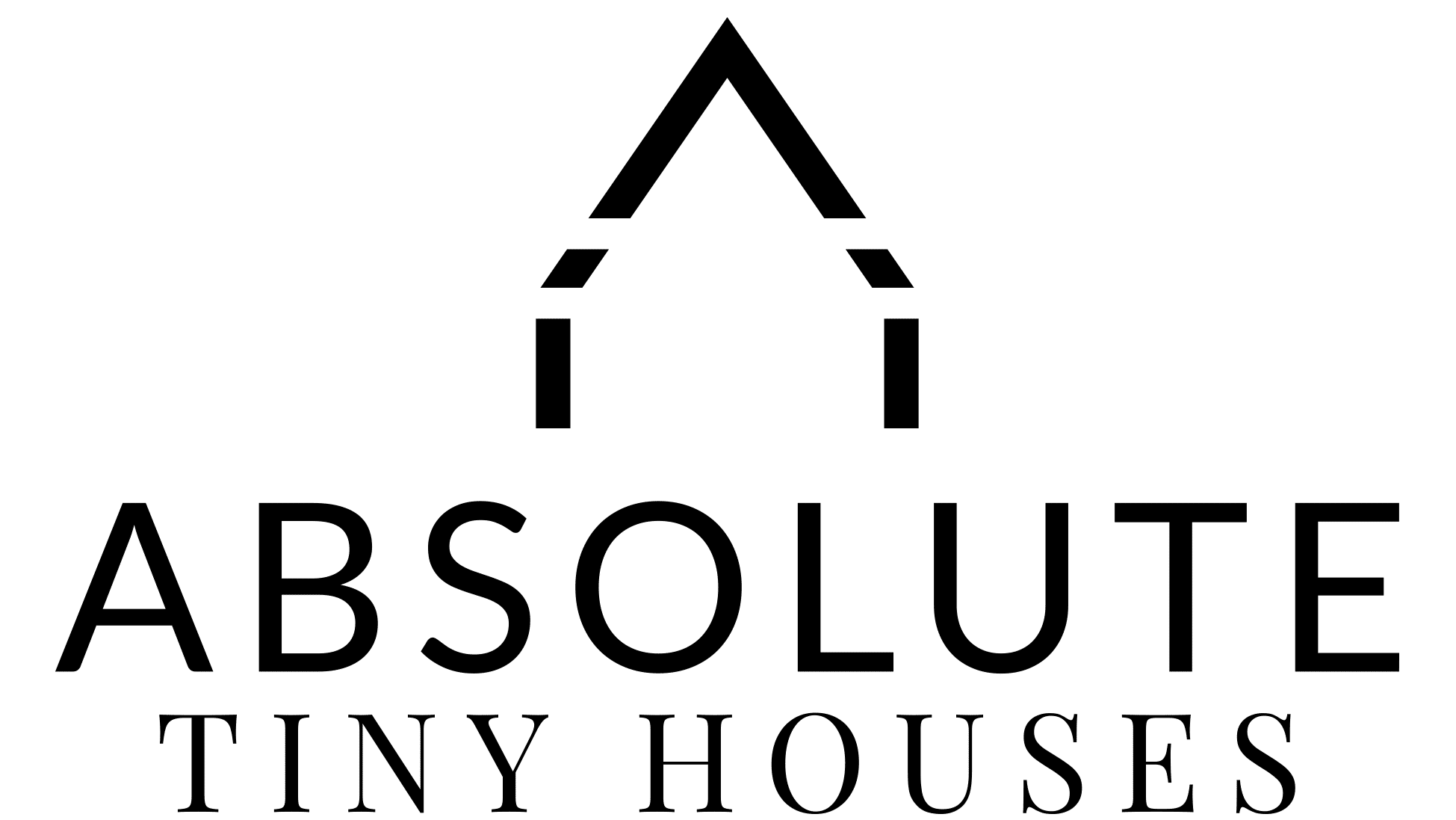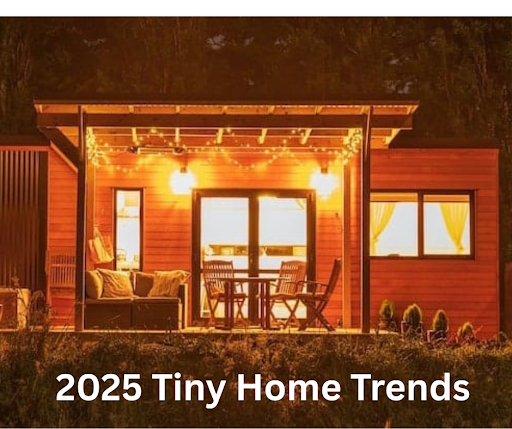The Tiny Home Movement is here to stay.
Why? The shortest answer is supply and demand.
New Zealanders are increasingly buying Tiny Homes. With demand come trends. These trends are the result of both the Sustainable Living Revolution and how it relates to tiny home living which we covered in detail in our previous blog post Tiny Homes; Making A Big Impact on the Sustainable Living Revolution
In this blog post, we:
- zoom in on these trends and
- unpack how they are likely to impact you
- give you things to think about and
- our top three recommendations to navigate the unregulated Tiny Home Industry
First, let’s touch briefly on the bigger picture.
New Zealand Real Estate Trends 2025
According to the QV House Price Index, May 2025, NZ housing market trends indicate that the average price of the traditional house and land in NZ, which has been increasing for the past few years, has in fact slowed. And in some areas, even decreased. For those that love facts and figures, the national average ($913,772) increased nationally by just 0.1%. Notwithstanding, the average traditional NZ house price tends to be way out of our Absolute Tiny Houses customers price range.
New Zealand Tiny Homes Changing Buyer Demographics
At Absolute Tiny House, based on our inquiries, we are seeing three strong demographic trends.
Post-Separation or divorce.
In the last 10 years, we have seen a significant increase in people (mostly female) purchasing their tiny home post-divorce or separation. Making this transition is daunting and full of personal challenges. It is also the journey to your personal haven and pathway to designing your new future.
Empty nesting and finding your own space
Additionally, as parents (partners or singles) see their children leave home to find their own way in the world, they too start to explore life after kids. Some have patiently waited to downsize to a batch that they can lock up, leave and travel. While others long to get away from the silence of the empty children’s bedrooms and the void it leaves in their life. Others seek the smaller home to create their own space in. Such as a reading corner, an artist bench or a music nook.
For many it is a combination of these things fuelled with the joy (and at times trepidation) of being able to do something for themselves.
Entering the property market
Buying a tiny home to enter the property market remains a consistent trends for 2025. Why? Simply because it is the most affordable way to enter the property market. Some people place their tiny home on a corner of a family or friend’s block of land. While others seeking a little more separation, rent land for their home. And others, to borrow from Dave Dobbyn, buy their own ‘slice of heaven’ to place their tiny home.
How to Make Sense of the Tiny House Trends and Challenges of the Growing Industry
As with any growing industry there are more and more suppliers. Furthermore, as the industry matures so do our buyers and their expectations. Together, both the builders and the buyers face new challenges. With more builders you have more choices and in making those choices you have more information to process and form options on. The following is designed to help you navigate the growing tiny home market.
Growth Trend #1; More Suppliers and Products Choices
In the early days of the Tiny Home Movement the homes were pretty basic. Many builds were a simple weather tight shell with the basic amenities. The market now offers a wide range of options to suit your needs and budget. You have choices from Kitset homes or Weather tight shells for the DYI’ers all the way through to luxury builds. Most of our clients are seeking the comfort and trappings of a luxury home to live their tiny home dream.
Considerations
Not all tiny homes are equal. Researching and comparing products takes time and sends you through a roller-coaster of emotions that can leave your reaching for a coffee, Panadol and if all else fails, something stronger.
With the increase in Tiny Home options available how do you compare products?
We suggest you start by exploring what is the right option for you?
- A kitset tiny home that you assemble from scratch is great for the genuine DIYer.
- A weather tight shell that you will do the internal fit out is again great for the DIYer, who would like all the structural work completed.
- A pre-fabricated tiny home that you don’t really need to do anything to.
- A luxury locally built tiny home that you can custom design and we do everything else.
Once you settle on which of the above options is right for you, you need to compare suppliers and builders. We suggest you either build an excel table to properly compare or download our Tiny Home comparison table. It will fast become more complicated that pen and paper will allow for. With our table, we suggest you list the supplier across the top and view the products down the first row. You can than add a simple yes/no in the table
Once you have done comparing we highly recommend that you get in writing all inclusions and exclusions. In other words, a fixed quote specifying inclusions and exclusions. From here you start to get the real cost of your tiny home. We have a detailed blog post about what you should know before buying your tiny home, including the hidden costs. (https://absolutetinyhouses.co.nz/blog/things-you-should-know-before-buying-tiny-homes/
Finally, you must get a build contract.
Growth Trend #2 – More offshore manufacturers are entering the NZ market.
The early days of the NZ Tiny home movement saw tiny homes being built locally. The last couple of years have seen the introduction of prefabricated tiny homes being shipped in from overseas. These prefab homes (sometimes referred to as capsules) are making the market more competitive. Interestingly enough, instead of seeing price wars as often is the case with offshore imports, it is our experience we are seeing quality wars with fairer pricing.
Our clients are willing to pay for a quality locally built tiny home finished with locally available luxury products. They want to have the peace of mind that their home is built with NZ Brandz approved products with a builder they can visit and get to know. Using a quality builder who uses quality products ensures that your tiny home is not only designed for the New Zealand conditions (Think insulation, double glazed windows etc.) but is built to last.
Due diligence considerations
When buying from an NZ Builder, can you?
- Meet your builder
- Go to his workshop
- Talk to real customers
- Visit real tiny homes he has built
- Call him if something goes wrong
When buying from an offshore supplier, does the supplier have:
- Repairs and warranty policy
- Agreed turnaround times for repairs and maintenance (Are you going to be waiting for parts from offshore)
- Local maintenance handy man
- Information of their build life expectancy
We are not saying that the offshore suppliers are not good. We are sure that many of them are. Simply, buying off-shore built products have different challenges to locally built tiny homes.
Build trend: Custom Design and Luxury Builds
In the last year, we have seen a significant increase in people requesting our custom design luxury builds. They love the ability to be a part of the design process and make their home truly unique to their needs.
Each year of the Tiny Home Expos we see the bar being raised as luxury is becoming the norm. Gone are the days that you have be the naturalist hippie (not that there is anything wrong with that) or live in a basic shack. You can truly live small in style.
Custom design and luxury is here to stay.
Possible Regulatory Changes & Legal Developments
If you are like me, as soon as I see regulations and the like I glaze over. Stay with me. We have filtered out the guff to give you the important bits. We want you to go into to your tiny home journey with your eyes wide open.
We are not wanting to be doom and gloom and we don’t have a crystal ball, however it is increasingly likely regulatory changes are coming.
By way of explanation, The New Zealand Tiny Home Movement in part has emerged to meet the growing affordable housing need. Simply traditional house prices are out of most people’s reach. The tiny home movements’ growth, like a flowing creek flowed through the gaps between two industries; being the building and the automotive industries. Together the ‘regulatory gaps’ paved the way for the Tiny Home movement to evolve. Not just evolve but blossom to such a point that the various authorities are yet to fully catch up. Let’s explore.
Currently, there are a number of bodies that ‘have a voice’ when it comes to tiny home regulations. Here’s an overview.
The first is the New Zealand Government Building Performance. Here’s their information on Tiny Homes. https://www.building.govt.nz/getting-started/tiny-houses
The “General Rule” states:
“If a tiny home is considered a building (i.e., fixed and occupied long term), it generally requires building consent and must comply with the Building Code.”
While the “Exemptions” go onto say:
- Schedule 1 Exemption: Some smaller detached buildings (under 30m2) with out sanitary facilities or potable water storage may be exempt from building conset, but still need to comply with the Building Code.
- Transportable Tiny homes: If a tiny home is designed and built as a vehicle (e.g., on a trailer) and is road-legal, it may be exempt from some building consent requirements.
Other considerations include;
Land Transport Act:
- Tiny homes on wheels may be classified as vehicles if they are road-legal and comply with the Land transport Act.
- This may involve obtaining a Warrant of Fitness (WoF) and meeting specific weight and dimension restrictions.
Finally, under the;
Resource Management Act;
- Local district plan rules, consent notices, or covenants on the land may affect where and how a tiny home can be placed.
- These rules cover aspects like site coverage, height restrictions, and other related requirements.
The above may appear daunting and what may change is unknown. However, if we build your tiny house on wheels you are exempt from the Building Code. Furthermore, if you are mindful of your footprint, how you handle waste and run-off it is possible to live within the intent of many of the local council bi-laws. We can work with you to help your tiny home meets these requirements.
Our Top 3 Recommendations
With all this information, below is our top 3 recommendations to help you navigate the your path forward in the unregulated industry.
- Research what you want and make a short list of builders who could be your builder. Compare designs, products and building quotes. Know what is included and excluded in your build. Download our checklist.
- Research your tiny home builder and go with someone you can actually speak to and trust. Check out their:
- Workplace
- Actual builds
- Real testimonials
- Ask as many questions as you can think off
- Make yourself familiar with the different Governing bodies knowing that that the tiny homes fall between the gaps in most cases. In particular understand the difference between transportable and fixed tiny homes. As you get more serious about your tiny home and where you want to live, familiarize yourself with the local council rules and regulations to best understand what may apply to you.
Be mindful that the Governing Bodies are in catch up mode when it comes to the Tiny House movement. So, there is no guarantee that there won’t be changes to the Governing Rules.
In summary
The reality is based on the New Zealand Real Estate trends traditional housing continues to be out of reach for many New Zealanders. Even though the NZ housing market trends are slowing, the fact is that the Tiny Homes Industry is here to stay. Next year there will be more builders to choose from, more off-shore products available and more people living in tiny homes.
The Tiny House Market trends are strong. The industry stronger and is starting to mature.
FAQs
Tiny homes are good investment for the following reasons;
- they are significantly more affordable than a traditionally home build.
- you are no longer paying rent to someone else and can start saving.
- you will have reduced utilities bills and other like costs
- they can be rented out like some of our clients Hannah or Ben who purchased one of our tiny homes as an Airbnb.





